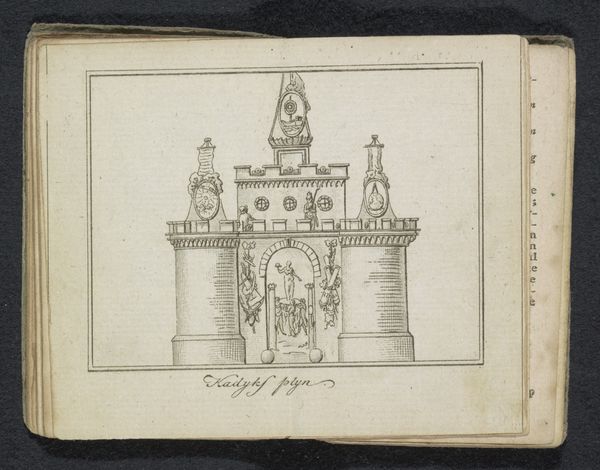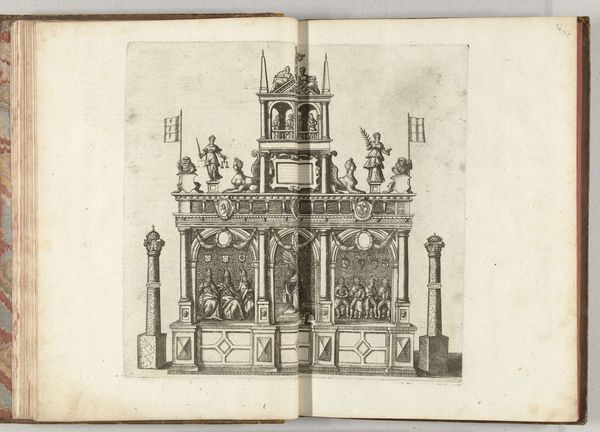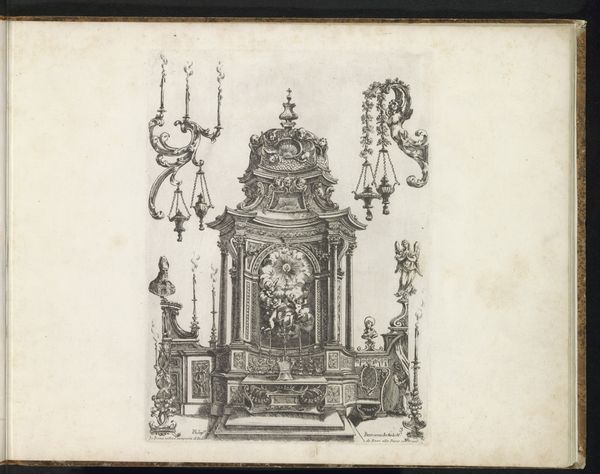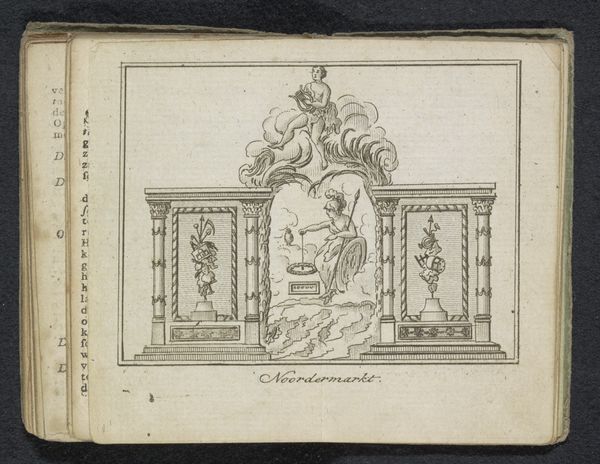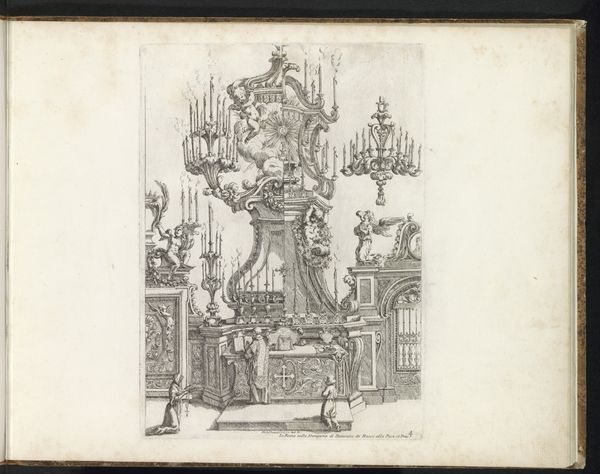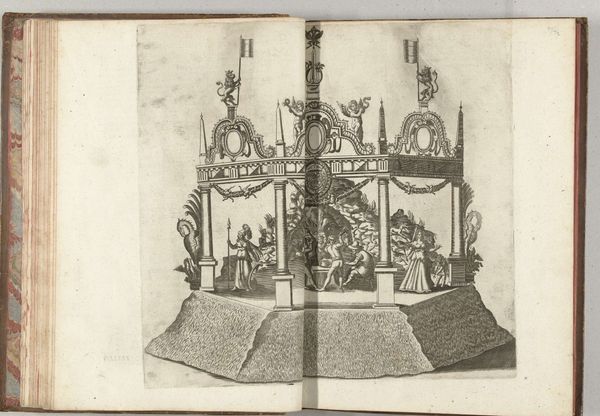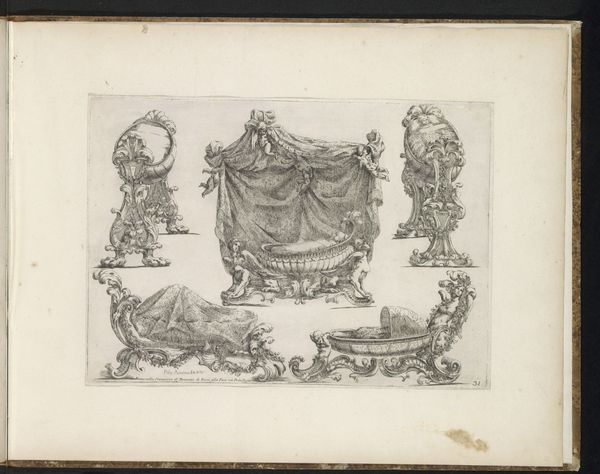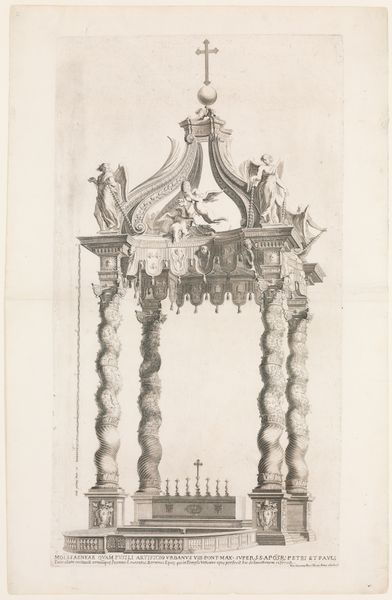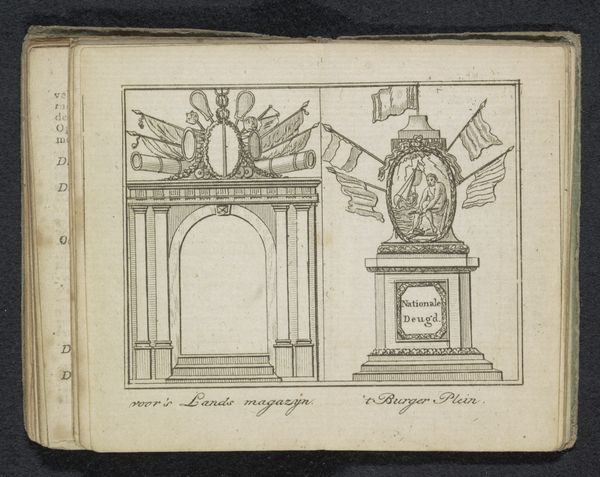
drawing, print, paper, ink, pen, engraving
#
portrait
#
drawing
#
aged paper
#
toned paper
#
quirky sketch
#
neoclassicism
#
ship
# print
#
sketch book
#
landscape
#
paper
#
personal sketchbook
#
ink
#
coloured pencil
#
geometric
#
pen and pencil
#
line
#
sketchbook drawing
#
pen
#
cityscape
#
history-painting
#
storyboard and sketchbook work
#
decorative-art
#
sketchbook art
#
engraving
#
miniature
Dimensions: height 98 mm, width 116 mm
Copyright: Rijks Museum: Open Domain
Editor: So, this is "Koophandel en Zeevaart, decoratie op de Nieuwmarkt, 1795", made anonymously. It looks like a print or engraving of a decorative monument on the Nieuwmarkt in Amsterdam. I’m struck by how it commemorates trade and seafaring. What's interesting to you about it? Curator: What grabs me immediately is its public function. This wasn't just art for art's sake, but something specifically created to celebrate—and likely, promote—a certain socio-political vision of Amsterdam at that time. Consider the context: 1795, the Batavian Republic was proclaimed, heavily influenced by the French Revolution. Editor: So, the image isn't just decorative; it’s a statement? Curator: Precisely. The ship, of course, is a powerful symbol of Dutch maritime power and global trade, the engine of Amsterdam's wealth. And the surrounding decorations—notice the framed image below the ship, perhaps depicting trade relations or colonial endeavors. The portraits could allude to the patrons that are behind the market itself, while classical ornamentation ties it to ideals of civic virtue. Why put up such elaborate and propagandistic display? What did the elites wish to communicate to their people? Editor: To show how they're going into the Golden age and want to stay like that! That’s a much richer read than just a pretty cityscape decoration. Curator: Exactly. Think of the Nieuwmarkt as a stage. The image serves as a form of civic advertisement, carefully crafting a visual narrative about the Republic’s identity and aspirations within this tumultuous period of transition, even projecting hope during occupation. Editor: I never considered public art having so much embedded messaging. I thought public display had to do mostly with art that everyone just happened to share together! Curator: Art never lives in isolation. Studying such piece through a historical and societal perspective offers valuable insights into how socio-political forces affect imagery in real ways. Editor: That's such a different way of looking at art! Thanks, I’ll be considering political messages and influences much more when visiting a museum!
Comments
No comments
Be the first to comment and join the conversation on the ultimate creative platform.
